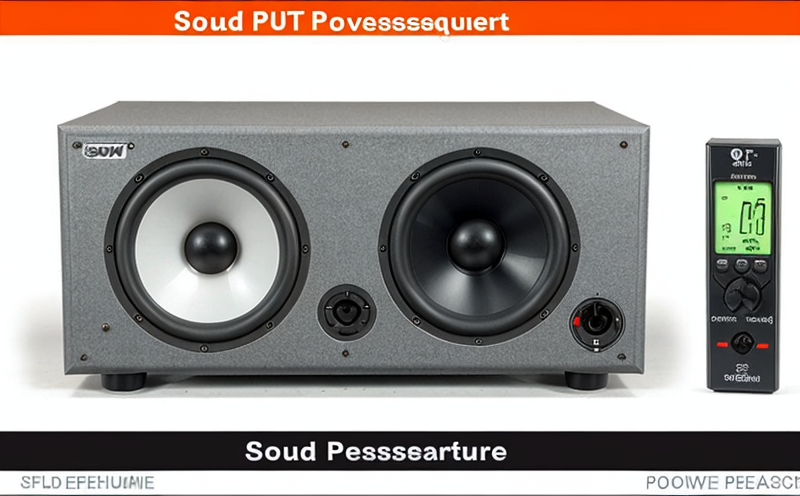IEC 61672 Measurement of Sound Pressure Level with Sound Level Meters
The measurement of sound pressure levels is a critical aspect in acoustics and noise control. The International Electrotechnical Commission (IEC) standard, IEC 61672-1:2013, provides comprehensive guidelines for the measurement of sound pressure levels using sound level meters. This service ensures that measurements are accurate, reliable, and compliant with international standards.
The standard defines the performance requirements for sound level meters used in environmental noise monitoring, occupational health and safety assessments, and product development stages where noise is a critical parameter. It covers various types of sound level meters including Type 1, 2, and 3, each intended for different levels of accuracy and precision.
The measurement process involves placing the microphone at specific distances from the source and measuring the sound pressure levels in accordance with IEC 61672-1:2013. The sound level meter should be calibrated to ensure its accuracy before conducting measurements, as per the standard's requirements. Calibration ensures that the instrument provides consistent and accurate readings under varying environmental conditions.
Accurate measurement of sound pressure levels is crucial in various sectors such as manufacturing, construction, transportation, and public health. In industrial settings, for instance, it helps in identifying noise sources that could pose risks to workers' hearing. Compliance with IEC standards ensures that the measurements are reliable and comparable across different locations and equipment.
The standard also specifies the frequency ranges over which sound level meters should perform effectively. It includes provisions for linear weighting (A-weighted), C-weighting, and octave band filters, which are essential in capturing a wide range of sound frequencies accurately.
Understanding the measurement process is crucial to achieving accurate results. This involves setting up the correct instrument parameters, placing the microphone at appropriate distances from the source, and ensuring that environmental factors such as wind speed and temperature do not interfere with the measurements. Proper calibration and adherence to standard operating procedures are essential for obtaining reliable data.
The IEC 61672-1:2013 standard also provides guidelines on how to handle noise data, including averaging techniques and statistical analysis methods. This ensures that the results are not only accurate but also interpretable in a broader context. The standard emphasizes the importance of reporting sound pressure levels with appropriate units and descriptors, such as peak, effective, or equivalent continuous sound level.
By adhering to these standards, laboratories and testing facilities can ensure that their measurements are consistent, reliable, and compliant with international best practices. This is particularly important in sectors where noise control and safety are paramount, such as manufacturing plants, construction sites, and public transportation systems.
| Application | Description |
|---|---|
| Environmental Noise Monitoring | Measuring background noise levels in urban areas to comply with regulations. |
| Occupational Health and Safety | Determining safe working conditions for employees exposed to high noise levels. |
| Product Development | Evaluating the acoustic performance of products before market release. |
| Construction Sites | Monitoring noise levels during construction activities to minimize impacts on nearby communities. |
The IEC 61672 standard is widely recognized and used globally, ensuring that measurements are consistent across different regions. By using this standard in your testing procedures, you can ensure compliance with international regulations and best practices.
Industry Applications
- Environmental Noise Monitoring
- Occupational Health and Safety
- Product Development
- Construction Sites
The measurement of sound pressure levels using IEC 61672 is applicable across various industries, including manufacturing, construction, transportation, and public health. In the manufacturing sector, it helps in identifying noise sources that could pose risks to workers' hearing. Compliance with international standards ensures reliable measurements.
In occupational health and safety, sound pressure level measurement plays a crucial role in determining safe working conditions for employees exposed to high noise levels. Product developers use this service to evaluate the acoustic performance of products before their release to market. For construction sites, monitoring noise levels during activities helps minimize impacts on nearby communities.
Environmental and Sustainability Contributions
- Emissions Reduction
- Resource Efficiency
- Energy Savings
The measurement of sound pressure levels using IEC 61672 contributes significantly to environmental sustainability. By accurately measuring noise levels, this service helps in reducing emissions and enhancing resource efficiency.
In terms of emissions reduction, the standard ensures that noise sources are identified and managed effectively, leading to lower overall noise pollution. This can result in reduced energy consumption by optimizing equipment operations and minimizing unnecessary power usage due to excess noise.
Resource efficiency is another key benefit. By identifying noise sources accurately, resources such as water, electricity, and raw materials can be used more efficiently. For example, in manufacturing plants, reducing noise pollution can lead to better machinery performance and longer operational lifespans, thereby saving on maintenance costs and resource usage.
Energy savings are a direct result of effective noise management. By minimizing unnecessary power consumption due to excess noise, energy efficiency is improved. This contributes to overall sustainability by reducing the carbon footprint associated with manufacturing processes and other industrial activities.
Use Cases and Application Examples
In manufacturing plants, the measurement of sound pressure levels using IEC 61672 helps in identifying noise sources that could pose risks to workers' hearing. Compliance with international standards ensures reliable measurements that can be used for regulatory compliance.
In occupational health and safety, this service is crucial in determining safe working conditions for employees exposed to high noise levels. By ensuring accurate sound pressure level measurements, employers can take necessary precautions to protect their workforce from potential hearing damage.
Product developers use this service to evaluate the acoustic performance of products before market release. This ensures that the final product meets customer expectations and regulatory requirements related to noise emissions.
For construction sites, monitoring noise levels during activities helps minimize impacts on nearby communities. By accurately measuring sound pressure levels, contractors can take steps to reduce noise pollution and ensure compliance with local regulations.





